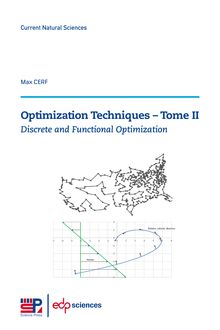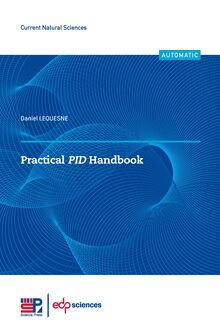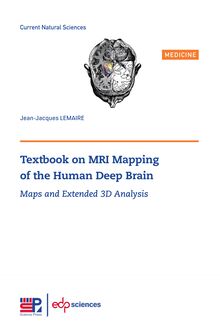-
 Univers
Univers
-
 Ebooks
Ebooks
-
 Livres audio
Livres audio
-
 Presse
Presse
-
 Podcasts
Podcasts
-
 BD
BD
-
 Documents
Documents
-
- Cours
- Révisions
- Ressources pédagogiques
- Sciences de l’éducation
- Manuels scolaires
- Langues
- Travaux de classe
- Annales de BEP
- Etudes supérieures
- Maternelle et primaire
- Fiches de lecture
- Orientation scolaire
- Méthodologie
- Corrigés de devoir
- Annales d’examens et concours
- Annales du bac
- Annales du brevet
- Rapports de stage
La lecture à portée de main
Découvre YouScribe en t'inscrivant gratuitement
Je m'inscrisThe Method of Fundamental Solutions: Theory and Applications , livre ebook
Découvre YouScribe en t'inscrivant gratuitement
Je m'inscrisEn savoir plus
En savoir plus

Description
The fundamental solutions (FS) satisfy the governing equations in a solution domain S, and then the numerical solutions can be found from the exterior and the interior boundary conditions on S. The resource nodes of FS are chosen outside S, distinctly from the case of the boundary element method (BEM). This method is called the method of fundamental solutions (MFS), which originated from Kupradze in 1963. The Laplace and the Helmholtz equations are studied in detail, and biharmonic equations and the Cauchy-Navier equation of linear elastostatics are also discussed. Moreover, better choices of source nodes are explored. The simplicity of numerical algorithms and high accuracy of numerical solutions are two remarkable advantages of the MFS. However, the ill-conditioning of the MFS is notorious, and the condition number (Cond) grows exponentially via the number of the unknowns used. In this book, the numerical algorithms are introduced and their characteristics are addressed. The main efforts are made to establish the theoretical analysis in errors and stability. The strict analysis (as well as choices of source nodes) in this book has provided the solid theoretical basis of the MFS, to grant it to become an effective and competent numerical method for partial differential equations (PDE). Based on some of our works published as journal papers, this book presents essential and important elements of the MFS. It is intended for researchers, graduated students, university students, computational experts, mathematicians and engineers.
Preface..................................................... XI
Acknowledgements............................................ XV
CHAPTER 1
Introduction................................................. 1
1.1Historic Review.......................................... 1
1.2 Basic Algorithms ........................................ 3
1.3 Numerical Experiments .................................... 5
1.4 Characteristics of the MFS ................................. 11
Part I.Laplace’s Equation ...................................... 15
CHAPTER 2
Dirichlet Problems ............................................ 19
2.1 Basic Algorithms of MFS .................................. 19
2.2 Preliminary Lemmas ...................................... 21
2.3 MainTheorems.......................................... 27
2.4 Stability Analysis for Disk Domains .......................... 32
2.5 Proof Methodology ....................................... 39
CHAPTER 3
Neumann Problems ........................................... 41
3.1Introduction ............................................ 41
3.2 Method of Fundamental Solutions............................ 42
3.2.1 Description of Algorithms ............................ 42
3.2.2 Main Results of Analysis and Their Applications ........... 44
3.3 Stability Analysis of Disk Domains ........................... 45
3.4 Stability Analysis for Bounded Simply-Connected Domains......... 49
3.4.1Trefftz Methods .................................... 50
3.4.2 Collocation Trefftz Methods ........................... 52
3.5 Error Estimates ......................................... 54
3.6 Concluding Remarks ...................................... 58
CHAPTER 4
Other Boundary Problems ...................................... 61
4.1 Mixed Boundary Condition Problems ......................... 61
4.2 Interior Boundary Conditions ............................... 66
4.3 Annular Domains ........................................ 70
CHAPTER 5
Combined Methods............................................ 77
5.1 Combined Methods ....................................... 77
5.2 Variant Combinations of FS and PS .......................... 79
5.2.1Simplified Hybrid Combination ........................ 79
5.2.2 Hybrid Plus Penalty Combination ...................... 81
5.2.3 Indirect Combination ................................ 84
5.3 Combinations of MFS with Other Domain Methods .............. 86
5.3.1 Combined with FEM ................................ 86
5.3.2 Combined with FDM ................................ 87
5.3.3 Combined with Radial Basis Functions................... 90
5.4 Singularity Problems by Combination of MFS and MPS ........... 91
CHAPTER 6
Source Nodes on Elliptic Pseudo-Boundaries......................... 99
6.1 Introduction ............................................ 99
6.2 Algorithms of MFS ....................................... 101
6.3 Error Analysis .......................................... 103
6.3.1 Preliminary Lemmas ................................ 103
6.3.2 Error Bounds ...................................... 107
6.4 Stability Analysis ........................................ 113
6.5 Selection of Pseudo-Boundaries .............................. 119
6.6 Numerical Experiments .................................... 121
6.7 Concluding Remarks ...................................... 124
Part II. Helmholtz’s Equations and Other Equations ................. 125
CHAPTER 7
Helmholtz Equations in Simply-Connected Domains ................... 127
7.1 Introduction ............................................ 127
7.2 Algorithms ............................................. 128
7.3 Error Analysis for Bessel Functions ........................... 131
7.3.1 Preliminary Lemmas ................................ 131
7.3.2 Error Bounds with Small k ............................ 134
7.3.3 Exploration of Bounded k ............................ 140
7.4 Stability Analysis for Disk Domains .......................... 146
7.5 Application to BKM ...................................... 149
CHAPTER 8
Exterior Problems of Helmholtz Equation ........................... 155
8.1 Introduction ............................................ 155
8.2 Standard MFS .......................................... 157
8.2.1 Basic Algorithms ................................... 157
8.2.2 Brief Error Analysis ................................. 159
8.3 Numerical Characteristics of Spurious Eigenvalues by MFS ......... 161
8.4 Modified MFS ........................................... 165
8.5 Error Analysis for Modified MFS ............................ 166
8.5.1 Preliminary Lemmas ................................ 167
8.5.2 Error Bounds ...................................... 175
8.6 Stability Analysis for Modified MFS .......................... 179
8.7 Numerical Experiments .................................... 181
8.7.1Circular Pseudo-Boundaries by Two MFS ................ 181
8.7.2 Non-Circular Pseudo-Boundaries by Modified MFS ......... 186
8.8 Concluding Remarks ...................................... 188
CHAPTER 9
Helmholtz Equations in Bounded Multiply-Connected Domains .......... 191
9.1 Introduction ............................................ 191
9.2 Bounded Simply-Connected Domains ......................... 192
9.2.1Algorithms........................................ 192
9.2.2 Brief Error Analysis ................................. 193
9.3 Bounded Multiply-Connected Domains ........................ 197
9.3.1Algorithms........................................ 197
9.3.2 Error Analysis ..................................... 198
9.4 Stability Analysis for Ring Domains .......................... 201
9.5 Numerical Experiments .................................... 210
9.6 Concluding Remarks ...................................... 214
CHAPTER 10
Biharmonic Equations ......................................... 215
10.1Introduction ........................................... 215
10.2 Preliminary Lemmas ..................................... 217
10.3 Error Bounds .......................................... 224
10.4 Stability Analysis for Circular Domains ....................... 228
10.4.1Approaches for Seeking Eigenvalues.................... 228
10.4.2 Eigenvalues λk(Φ) and λk(DΦ) ........................ 231
10.4.3 Bounds of Condition Number ........................ 236
10.5 Numerical Experiments ................................... 242
CHAPTER 11
Elastic Problems.............................................. 247
11.1Introduction ........................................... 247
11.2 Linear Elastostatics Problems in 2D ......................... 247
11.2.1Basic Theory .................................... 247
11.2.2 Traction Boundary Conditions ....................... 249
11.2.3 Fundamental Solutions ............................. 250
11.2.4 Particular Solutions ............................... 251
11.3 HTM,MFS and MPS .................................... 252
11.3.1 Algorithms of HTM ............................... 252
11.3.2 Algorithms of MFS and MPS ........................ 252
11.4 Errors Between FS and PS ................................ 254
11.4.1 Preliminary Lemmas ............................... 254
11.4.2 Polynomials Pn Approximated by xn
11.4.3 Other Proof for Theorem 11.4.1 ...................... 258
11.4.4 The Polynomials LPn Approximated by Principal FS ...... 261
11.5 Error Bounds for MFS and HTM ........................... 264
11.5.1 The MFS ....................................... 264
11.5.2 The HTM Using FS ............................... 266
11.6 Numerical Experiments ................................... 268
11.7Appendix: Addition Theorems of FS in Linear Elastostatics ....... 271
11.7.1 Preliminary Lemmas ............................... 271
11.7.2 Addition Theorems ................................ 277
CHAPTER 12
Cauchy Problems ............................................. 281
12.1Introduction ........................................... 281
12.2 Algorithms of Collocation Trefftz Methods .................... 281
12.3 Characteristics ......................................... 284
12.3.1 Existence and Uniqueness ........................... 284
12.3.2 Ill-Posedness of Inverse Problems ..................... 287
12.4 Errorand Stability Analysis ............................... 290
12.4.1Error Analysis ................................... 290
12.4.2 Stability Analysis ................................. 291
12.5 Applications to Cauchy Data .............................. 295
12.5.1 Errors on Cauchy Boundary ......................... 295
12.5.2 Sensitivity of Solutions on Cauchy Data ................ 296
12.6 Numerical Experiments and Concluding Remarks ............... 297
CHAPTER 13
3D Problems................................................ 301
13.1 Introduction ........................................... 301
13.2 Method of Particular Solutions ............................. 302
13.3 Method of Fundamental Solutions ........................... 309
13.3.1Algorithms ...................................... 309
13.3.2 Linkto MPS..................................... 310
13.4 Error Analysis for MFS ................................... 313
13.4.1 Preliminary Lemmas ............................... 314
13.4.2 Error Bounds .................................... 321
13.5 Numerical Experiments ................................... 324
13.5.1 Collocation Equations on Γ .......................... 324
13.5.2 By MFS ........................................ 325
13.5.3 By MPS ........................................ 330
13.6 Concluding Remarks ..................................... 331
13.7 Appendix: 3D Problems of Helmholtz Equations ................ 332
13.7.1 Interior Dirichlet Problems .......................... 332
13.7.2 Exterior Dirichlet Problems ......................... 333
Part III.Selection of Source Nodes and Related Topics ................ 335
CHAPTER 14
Comparisons of MFS and MPS ................................... 339
14.1Introduction ........................................... 339
14.2 Two Basis Boundary Methods.............................. 340
14.2.1 Method of Particular Solutions ....................... 340
14.2.2 Method of Fundamental Solutions..................... 342
14.3 The MFS-QR .......................................... 346
14.3.1Algorithms in Elliptic Coordinates .................... 346
14.3.2 Characteristics of MFS-QR .......................... 349
14.4 Numerical Experiments and Comparisons ..................... 354
14.4.1Highly Smooth Boundary Data ....................... 355
14.4.2 Boundary Data with Strong Singularity ................ 356
14.4.3 Better Pseudo-Boundaries........................... 358
14.5 Concluding Remarks ..................................... 360
CHAPTER 15
Stability Analysis for Smooth Closed Pseudo-Boundaries ............... 361
15.1Introduction ........................................... 361
15.2 Relations Between FS and PS .............................. 362
15.3 Bounds of Cond for Non-Elliptic Pseudo-Boundaries ............. 365
CHAPTER 16
Singularity Problems from Source Functions; Removal Techniques ........ 375
16.1Introduction ........................................... 376
16.2 Analytical Framework for CTM in [169] ...................... 378
16.3 Error Bounds for Singular Solutions from (16.1.3) ............... 380
16.4 Singularity for Polygonal Domains and Arbitrary Domains ........ 383
16.5 Removal Techniques for Laplace’s Equation ................... 384
16.5.1 For the Case of Q∗ Outside Γ........................ 384
16.5.2 For the Case of Q∗ Inside Γ under theImage Node Existing . 386
16.6 Numerical Experiments ................................... 388
16.7 Applications to Amoeba-Like Domains ....................... 390
16.7.1 Numerical Results................................. 390
16.7.2 Removal Techniques Linked to Source Identification
Problems............................................ 394
16.8 Concluding Remarks ..................................... 399
CHAPTER 17
Source Nodes on Pseudo Radial-Lines .............................. 401
17.1Introduction ........................................... 401
17.2 Pseudo Radial-Lines ..................................... 404
17.2.1 One Pseudo Radial-Line ............................ 404
17.2.2 Two Pseudo Radial-Lines ........................... 408
17.3 Stability Analysis ....................................... 409
17.3.1Lower Bound Estimates of Cond for Basic Case .......... 409
17.3.2 Upper Bound Estimates of Cond for Variant Case by Case II. 412
17.4 Numerical Experiments ................................... 415
17.4.1 Disk Domains .................................... 415
17.4.2 Non-Disk Domains ................................ 420
17.5 Concluding Remarks ..................................... 424
Epilogue.................................................... 427
References.................................................. 431
Glossary of Symbols ........................................... 443
Index ......................................................449
Sujets
Informations
| Publié par | EDP Sciences |
| Date de parution | 04 décembre 2023 |
| Nombre de lectures | 0 |
| EAN13 | 9782759831722 |
| Langue | English |
| Poids de l'ouvrage | 5 Mo |
Informations légales : prix de location à la page 1,9100€. Cette information est donnée uniquement à titre indicatif conformément à la législation en vigueur.
Extrait
-
 Univers
Univers
-
 Ebooks
Ebooks
-
 Livres audio
Livres audio
-
 Presse
Presse
-
 Podcasts
Podcasts
-
 BD
BD
-
 Documents
Documents
-
Jeunesse
-
Littérature
-
Ressources professionnelles
-
Santé et bien-être
-
Savoirs
-
Education
-
Loisirs et hobbies
-
Art, musique et cinéma
-
Actualité et débat de société
-
Jeunesse
-
Littérature
-
Ressources professionnelles
-
Santé et bien-être
-
Savoirs
-
Education
-
Loisirs et hobbies
-
Art, musique et cinéma
-
Actualité et débat de société
-
Actualités
-
Lifestyle
-
Presse jeunesse
-
Presse professionnelle
-
Pratique
-
Presse sportive
-
Presse internationale
-
Culture & Médias
-
Action et Aventures
-
Science-fiction et Fantasy
-
Société
-
Jeunesse
-
Littérature
-
Ressources professionnelles
-
Santé et bien-être
-
Savoirs
-
Education
-
Loisirs et hobbies
-
Art, musique et cinéma
-
Actualité et débat de société
- Cours
- Révisions
- Ressources pédagogiques
- Sciences de l’éducation
- Manuels scolaires
- Langues
- Travaux de classe
- Annales de BEP
- Etudes supérieures
- Maternelle et primaire
- Fiches de lecture
- Orientation scolaire
- Méthodologie
- Corrigés de devoir
- Annales d’examens et concours
- Annales du bac
- Annales du brevet
- Rapports de stage




















